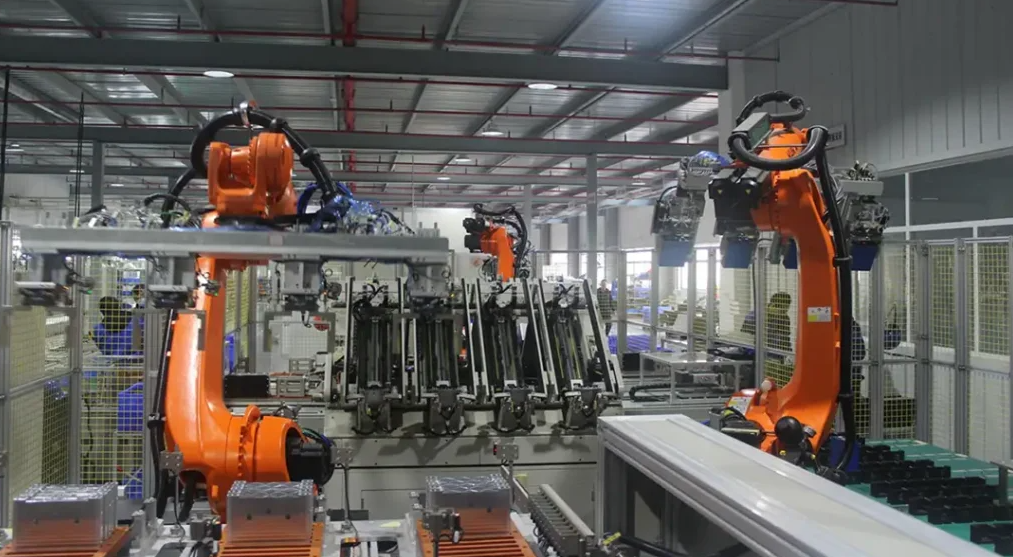
The Electrical Automation Systems Behind Smart Manufacturing
In the era of Industry 4.0, smart manufacturing has emerged as a transformative force within the industrial sector, combining cutting-edge technologies like the Internet of Things (IoT), artificial intelligence (AI), and robotics. At the heart of this revolution lies a crucial component: electrical automation systems. These systems are the backbone of smart factories, enabling the seamless integration and optimization of production processes.
What Are Electrical Automation Systems?
Electrical automation systems encompass a wide range of technologies that automate and control various industrial processes, from the assembly line to the final product. These systems typically include hardware such as sensors, actuators, and control panels, as well as software for monitoring and managing production. The goal is to replace manual operations with automated tasks that increase efficiency, precision, and consistency.
Key Components of Electrical Automation Systems
-
Programmable Logic Controllers (PLCs)
PLCs are the brain of most industrial automation systems. These devices process input signals from sensors, make decisions based on pre-programmed logic, and send output signals to actuators and machines. They are highly reliable and designed to operate in harsh industrial environments. -
Sensors and Actuators
Sensors collect data from machines and environments, such as temperature, pressure, and speed. This data is fed into the system to inform decisions. Actuators, on the other hand, carry out physical actions like turning a valve, moving a robotic arm, or adjusting a conveyor belt. -
Human-Machine Interfaces (HMIs)
HMIs allow operators to interact with the automation system, providing real-time data, performance analytics, and alerts. These interfaces are vital for operators to monitor and adjust parameters, ensuring the system functions optimally. -
Industrial Networks and Communication Protocols
Smart factories rely on high-speed networks that allow for real-time communication between machines, systems, and the cloud. Communication protocols like Modbus, Ethernet/IP, and OPC UA ensure that data flows seamlessly across different devices.
How Electrical Automation Systems Enable Smart Manufacturing
-
Increased Efficiency
Automation systems optimize workflows, reduce downtime, and improve overall equipment effectiveness (OEE). This results in a more efficient production cycle and lowers costs by minimizing human intervention and errors. -
Real-time Monitoring and Data Analytics
Sensors integrated into automation systems continuously monitor production processes. The data collected is analyzed in real time to identify bottlenecks, predict failures, and suggest improvements, leading to smarter decision-making and proactive maintenance strategies. -
Predictive Maintenance
Using advanced algorithms, electrical automation systems can predict equipment failures before they happen. This helps manufacturers reduce unplanned downtime and extend the lifespan of expensive machinery, ensuring a more reliable production line. -
Enhanced Flexibility and Scalability
Electrical automation systems enable manufacturers to quickly adapt to changes in product design or production schedules. They can easily reprogram and reconfigure machines, allowing for the rapid deployment of new products and customization of existing ones. -
Energy Efficiency
With smart sensors and advanced control algorithms, automation systems can help reduce energy consumption by optimizing machine usage, adjusting settings based on real-time data, and ensuring that resources are used efficiently.
The Future of Electrical Automation in Smart Manufacturing
As the demand for more flexible, efficient, and sustainable manufacturing grows, the role of electrical automation systems will continue to expand. Advancements in artificial intelligence and machine learning will allow for even more sophisticated predictive analytics and autonomous decision-making, further pushing the boundaries of smart manufacturing.
Moreover, with the increasing integration of renewable energy sources and sustainable practices, automation systems will be instrumental in minimizing waste, optimizing energy use, and ensuring that production processes align with environmental goals.
Conclusion
Electrical automation systems are at the heart of smart manufacturing, enabling greater efficiency, precision, and adaptability. As the industrial landscape continues to evolve, the importance of these systems will only grow, helping manufacturers stay competitive in a fast-changing global market. By integrating automation, businesses can not only optimize production but also foster innovation, sustainability, and resilience in their operations.
Author Profile
Latest entries
 IoT2025-04-14Electrical Automation – The Indispensable Behind-the-Scenes Hero of the Internet of Things
IoT2025-04-14Electrical Automation – The Indispensable Behind-the-Scenes Hero of the Internet of Things Electrical Automation Knowledge2025-04-11Electrical Automation Solutions in the Energy Storage Industry: Applications, Advancements, and Benefits
Electrical Automation Knowledge2025-04-11Electrical Automation Solutions in the Energy Storage Industry: Applications, Advancements, and Benefits Electrical Safety & Protection2025-04-06Electric Motor Protection and Control Systems: An In-depth Overview
Electrical Safety & Protection2025-04-06Electric Motor Protection and Control Systems: An In-depth Overview Electrical Automation Knowledge2025-04-01The Application of Electrical Automation in the New Energy Industry
Electrical Automation Knowledge2025-04-01The Application of Electrical Automation in the New Energy Industry










